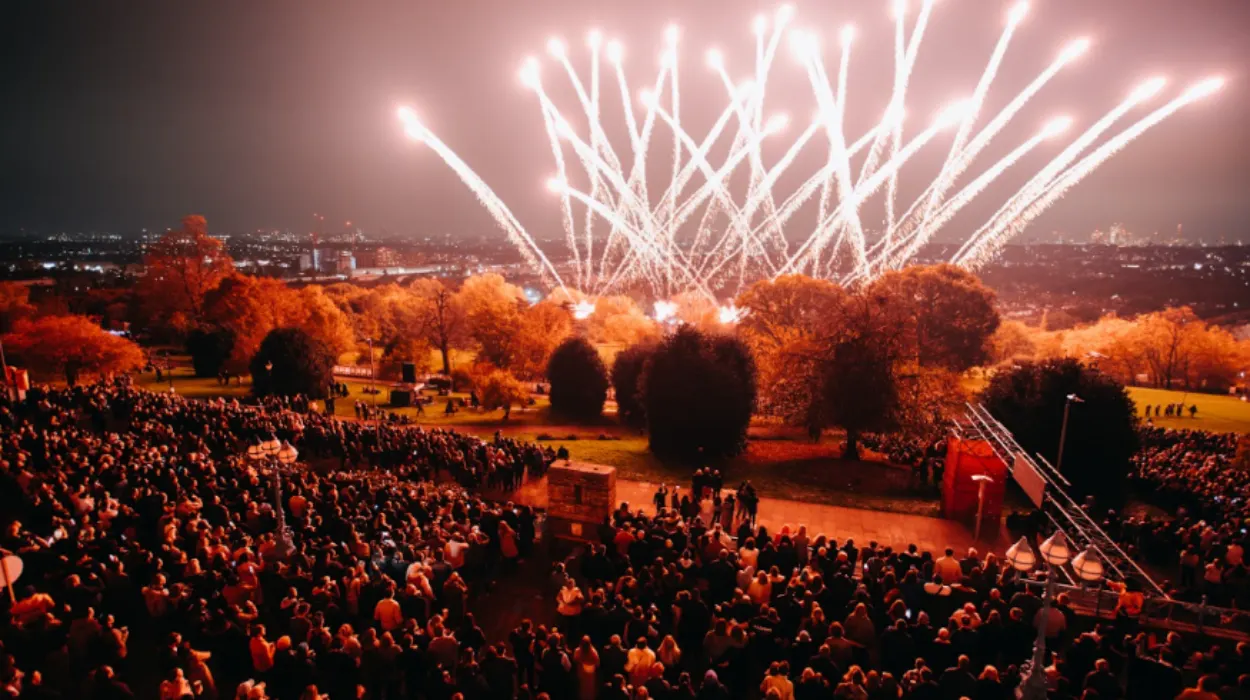Bonfire Night, also widely known as Guy Fawkes Night, is celebrated across the United Kingdom every year on November 5th. Its origins trace back to a dramatic event in 1605 called the Gunpowder Plot, a failed conspiracy orchestrated by a group of English Catholics, including Guy Fawkes, who intended to assassinate King James I and destroy the Houses of Parliament by blowing up the gunpowder stored beneath them. This plot aimed to end Protestant rule and restore a Catholic monarch to the throne. However, the plan was foiled the night before execution when Guy Fawkes was discovered guarding the explosives in the cellars of Parliament and was arrested.
Parliament declared November 5th as a day of thanksgiving for the king’s survival, and people began lighting bonfires to commemorate the foiling of the plot. The Observance of 5th November Act was subsequently passed to encourage annual celebrations marked by bonfires and fireworks, laying the foundations for what became a longstanding tradition.
Over the ensuing centuries, Bonfire Night has evolved from a politically charged commemoration into a festive annual cultural event, blending historical remembrance with celebratory elements. It symbolizes the triumph of government and communal order over rebellion and violence, reflecting themes of survival, unity, and national identity. While the original Act was repealed in 1859, the firework displays and burning of Guy Fawkes effigies remained entrenched in British social life, serving as a compelling reminder of the country’s tumultuous religious and political history.
Traditional practices and symbolism
On the evening of November 5th, communities across the UK gather to light bonfires topped with effigies of Guy Fawkes, colloquially called “guys.” These effigies are often parade around neighborhoods by children who traditionally ask for “a penny for the guy,” a phrase dating back centuries that was originally a way to raise money for the night’s celebrations. The bonfires symbolize the burning away of conspiracy and threat to the state, serving as a symbol of survival and justice.
Accompanying the bonfires are spectacular fireworks displays, which have become increasingly elaborate, delighting families and communities. Fireworks represent the explosives that were never ignited, providing a visual and celebratory representation of victory. Besides the visual feast, traditional Benfire Night foods include toffee apples, parkin (a sticky ginger cake), jacket potatoes, and treacle toffee, reflecting autumn and seasonal culinary preferences linked to harvest celebrations.
Historically, the festivities served not only as a remembrance but also as a social outing bringing communities together through a shared cultural ritual. In many towns, local bonfire societies organize processions and pageants that preserve unique local identities through costumes, music, and theatrics. The sense of community and cultural transmission has cemented Bonfire Night as a staple occasion in the UK’s calendar.
Major Bonfire Night Celebrations across the UK
While Bonfire Night is celebrated nationwide, several cities and towns are renowned for their particularly vibrant and large-scale events. Lewes in Sussex hosts the country’s largest and most famous Bonfire Night celebrations, featuring intricate torch-lit processions, multiple bonfires, and fireworks displays. Events here are steeped in historical symbolism and local tradition, with upwards of 30 bonfire societies participating, making it a quintessential experience of the holiday’s spirit.
In London, major fireworks displays are staged prominently in areas including Victoria Park, Battersea Park, and along the River Thames near the London Eye, attracting thousands of spectators every year. London’s events combine entertainment, spectacle, and historical commemoration, often culminating in grand finales timed to the clock striking 11 PM.
Other notable locations include Lewes Bonfire in East Sussex, Nottingham’s historic celebrations, and celebrations in Yorkshire and the West Country. These local customs blend history with modern community life, incorporating music, fairs, and food stalls to create festive atmospheres appealing to young and old alike. Local councils and volunteer organizations play pivotal roles in organizing and ensuring the safety of these large-scale events, underscoring the communal effort that sustains this enduring tradition.
Contemporary cultural and social dimensions
Beyond its historical roots and festive elements, Bonfire Night carries contemporary social meanings. It serves as an occasion for communities to come together amid increasingly urbanized and digitally oriented lifestyles, providing a moment of connection through shared experience. The night fosters social cohesion, especially in areas where different cultural groups celebrate together, highlighting British multiculturalism.
There is also an educational aspect during the season, as schools and cultural institutions use the occasion to teach aspects of British history involving the Gunpowder Plot, its context, and its lasting political consequences. These narratives are embedded within broader discussions on tolerance, peace, and civic responsibility, linking past conflicts to contemporary values.
Safety standards and regulations surrounding fireworks have profoundly shaped modern Bonfire Night celebrations, requiring compliance to prevent injuries and property damage. While bonfires and fireworks harken to older, less regulated times, modern festivities carefully balance traditional spectacle with public safety.
Bonfire Night’s role in British cultural identity and its future
Bonfire Night continues to be a powerful expression of British cultural identity and historical consciousness. Its longevity—stretching over 400 years—has made it a ritual that touches on themes of national survival, democratic governance, and community resilience. As the UK evolves socially and culturally, Bonfire Night is adapting, maintaining both its historical core and embracing contemporary societal values.
Future celebrations are likely to incorporate heightened environmental awareness, adopting more sustainable practices in fireworks and bonfire construction. Innovations in light displays and community engagement are expected to keep the tradition relevant for younger generations. Additionally, continued emphasis on educational outreach will reinforce the holiday’s historical significance while promoting inclusive narratives respectful of diverse perspectives.
Ultimately, Bonfire Night remains a vibrant tradition that encapsulates the UK’s ability to honor its past while celebrating present-day communal bonds and cultural continuity. Its role as both a reminder of historical vigilance and a festive social occasion ensures its place in Britain’s cultural fabric for years to come.


